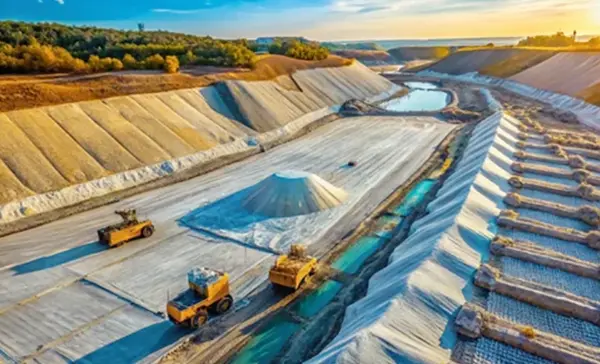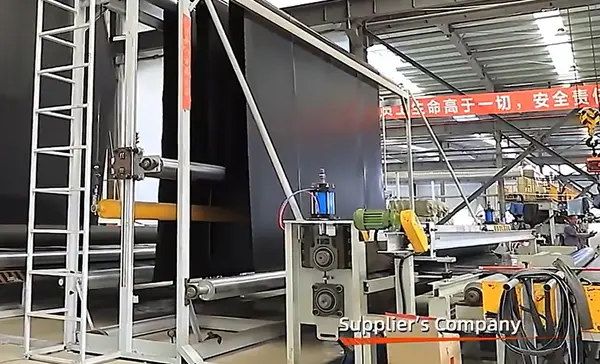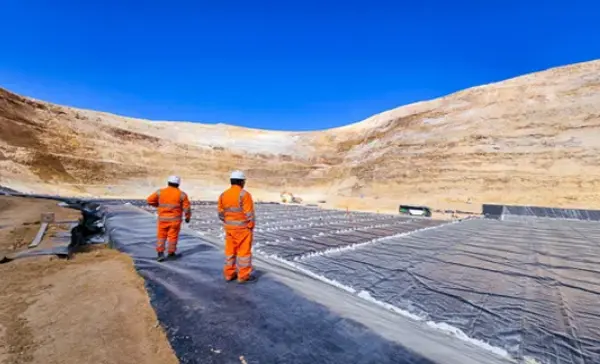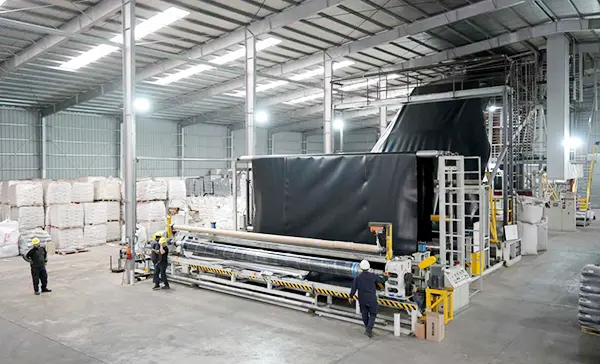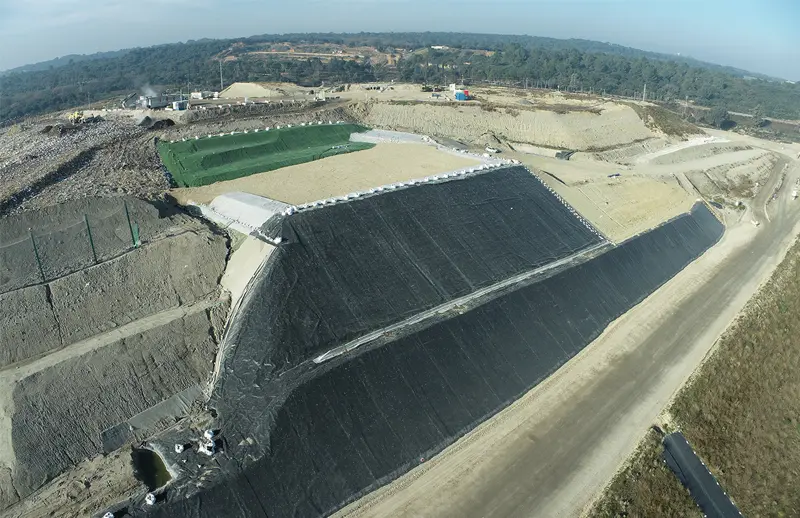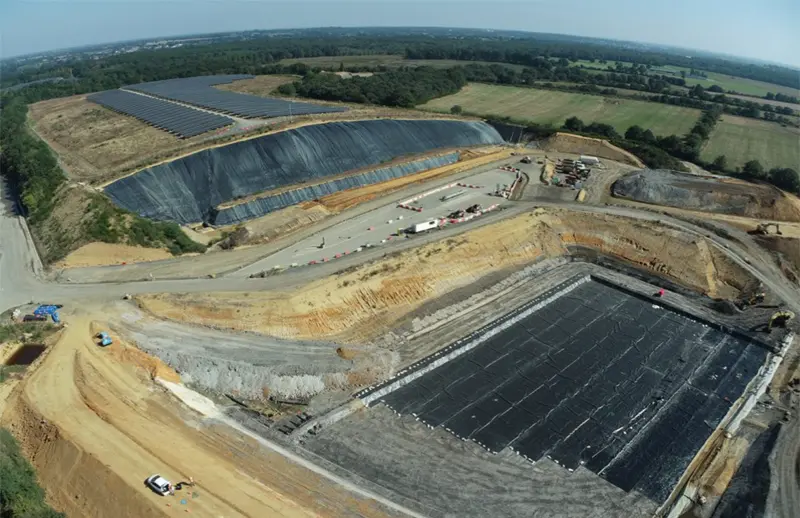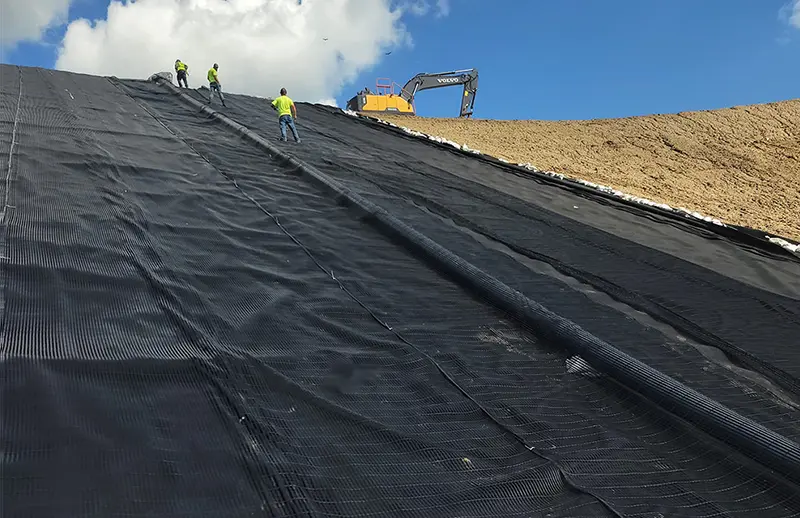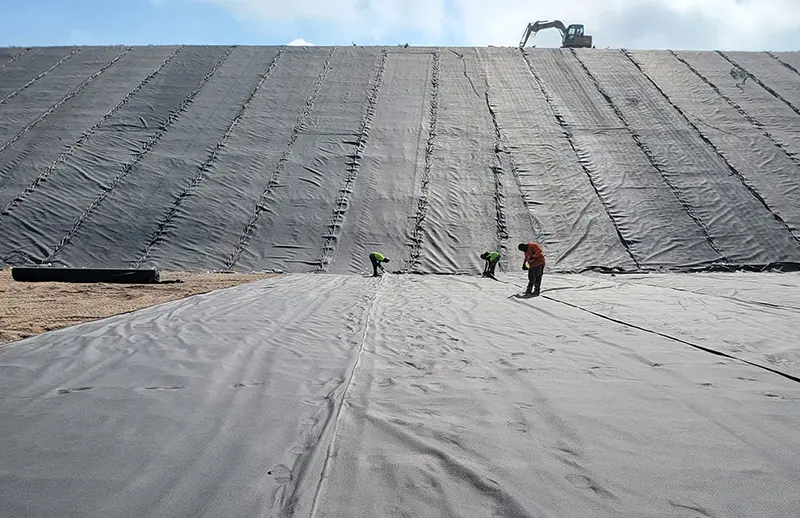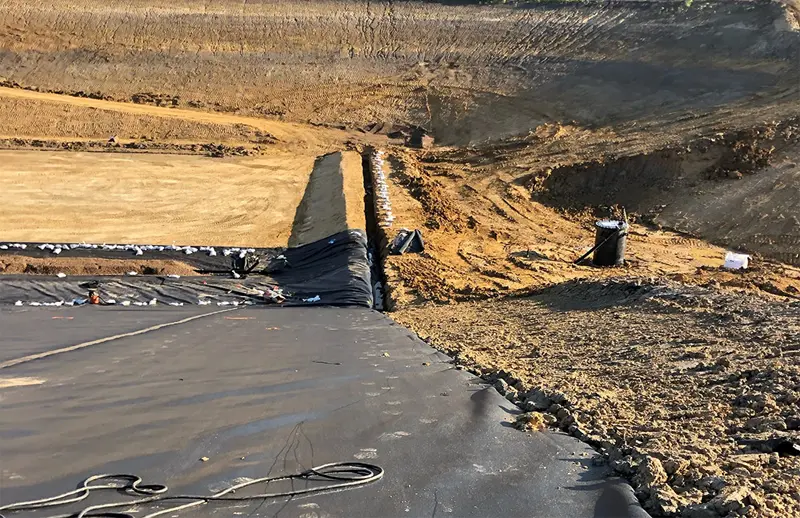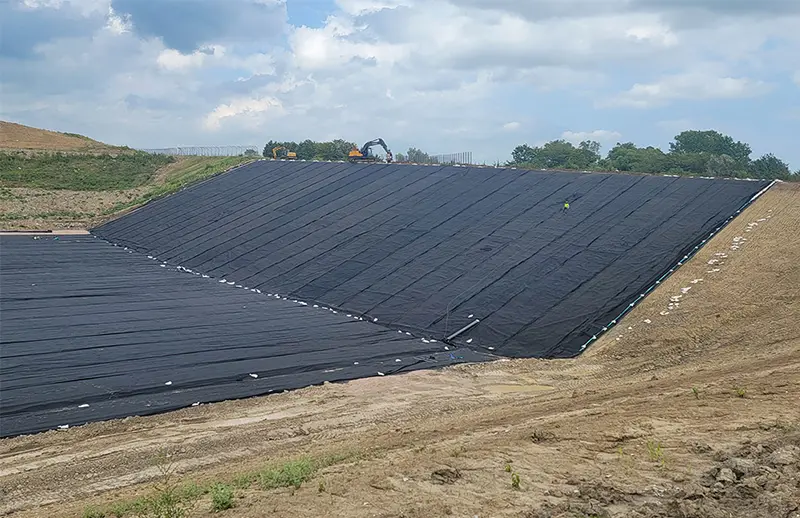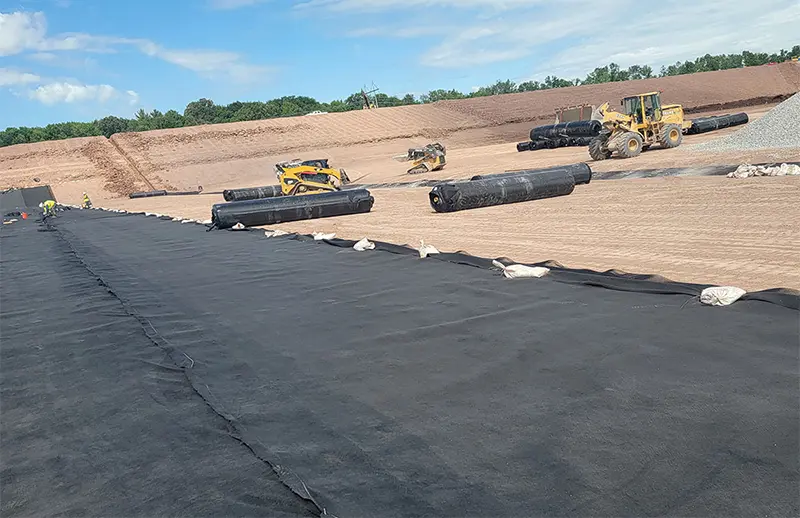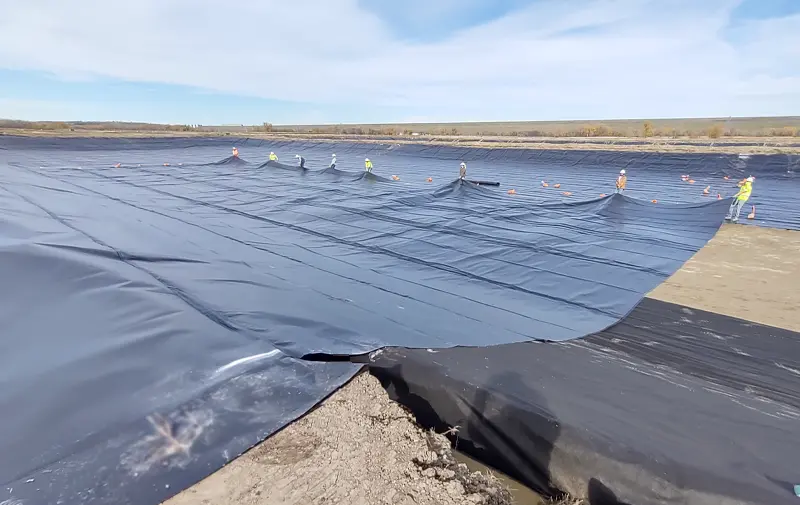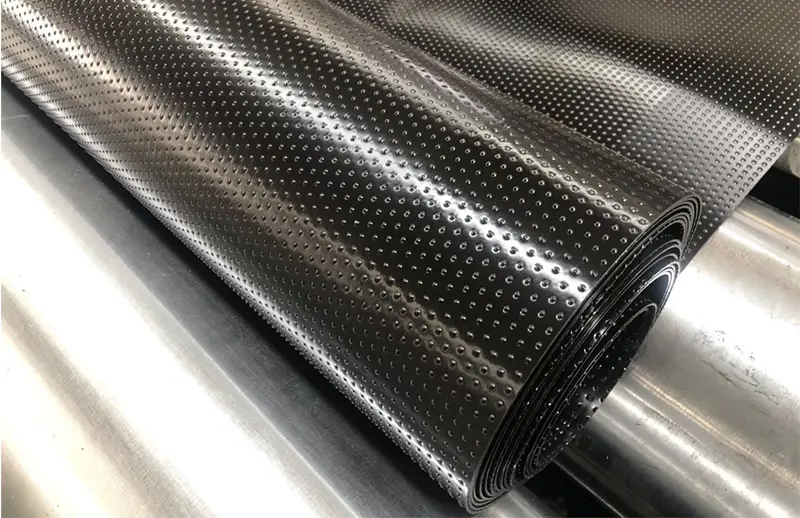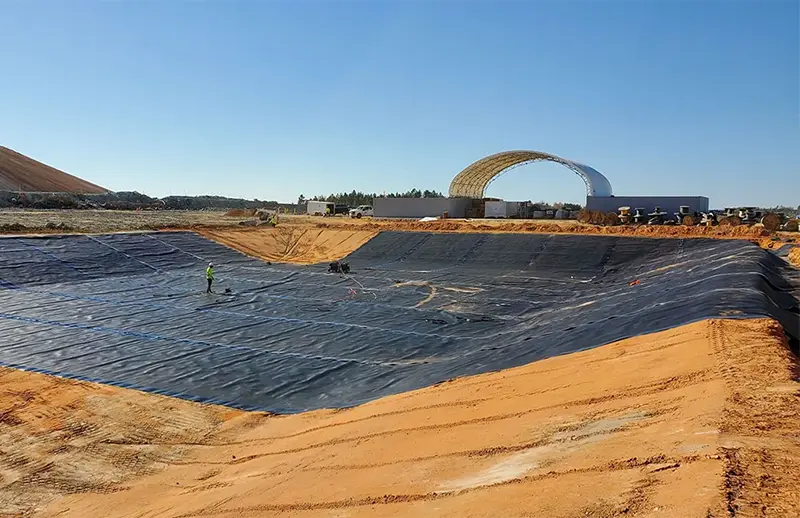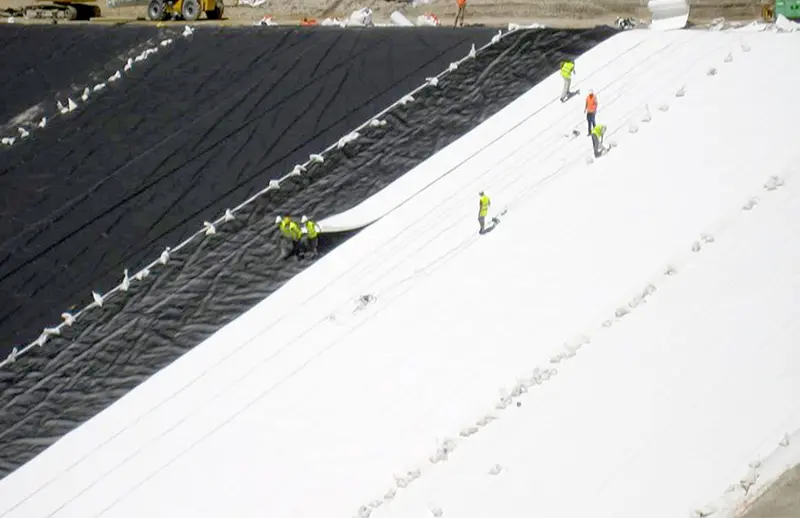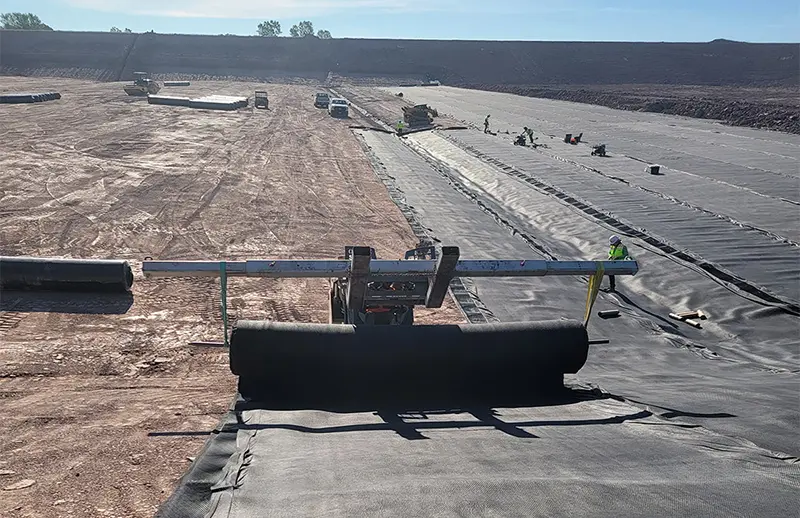
Landfill Closures HDPE Liner
This sealing system plays a vital role in limiting the release of methane and other harmful gases, helping to reduce greenhouse gas emissions while also preventing rainwater from turning into leachate.
Textured LLDPE or HDPE geomembrane on a prepared sub grade covered with a geocomposite drainage layer is the most common closure system for closed landfill cells. These two layers of geosynthetic products are then covered with a soil cover, which is seeded to prevent soil erosion. The geomembrane prevents the infiltration of rainwater and also prevents methane gas from escaping into the atmosphere. The geocomposite transports the rainwater that seeps through the soil cover to collection piping, which in turn carries the water away from the closed cell. Many of these closed landfills have been turned into recreational areas.
Groundwater and soil contamination prevention is a challenge that various manufacturers and industries are forced to deal with. Dingkun installs geomembranes quickly for a variety of secondary containment applications, including large concrete basin lining. We have a wide range of materials with varying levels of chemical and UV resistance to suit all secondary containment needs.
Today’s modern solid waste landfill is an extremely secure containment for solid waste. They utilize a combination of smooth and textured geomembranes (liners), geocomposites and geosynthetic clay liners. These products have replaced natural materials such as sand and clay and have offered a much higher quality and more secure containment of solid waste. A very common base liner system design begins with a secondary liner on the prepared subgrade and then a geonet or geocomposite on top of that liner. A primary liner is then installed. Finally, another geocomposite is laid down to cover the primary liner layer. The geonet or geocomposite that is between the liners is for leak detection, and the geocomposite over the primary liner is for leachate collection and transportation to sumps. In the sumps, the leachate can be collected and treated. Dingkun has vast experience in the supply and installation of these products in landfill applications throughout the country.
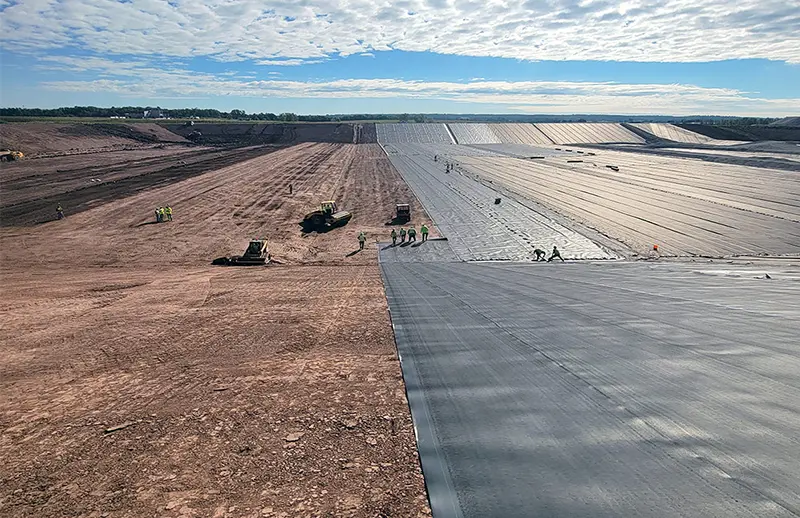
Proper landfill sealing is crucial for preventing environmental issues and ensuring a sustainable approach to solid waste management.
Once a landfill cell reaches the end of its operational life, it is covered with a protective barrier designed to prevent rainwater infiltration and control gas emissions from the waste decomposition process. This sealing system plays a vital role in limiting the release of methane and other harmful gases, helping to reduce greenhouse gas emissions while also preventing rainwater from turning into leachate.
Dingkun geomembranes provide a proven, high-performance solution for landfill sealing. With exceptional mechanical strength and long-term durability, they offer reliable protection against gas migration and stormwater infiltration, ensuring effective environmental containment.
How Damp Proof Membranes Work
Damp proof membranes used on walls possess studded profiles on the surface that are similar to the design of an egg box. This formation creates an air cavity, allowing the evaporation of water without damaging the wall.
Those used on floors are in the form of sheets. They’re installed below the concrete, following the approved British building regulations to prevent building materials from absorbing moisture.
A DPM may also be used with a damp proof course (DPC) to ensure complete protection from penetrating and rising damp.
Purpose of a Damp Proof Membrane
A damp proof membrane (DPM) ensures that damp doesn’t rise from the ground by capillary action. It also prevents moisture from penetrating insulation materials like wool and cellulose, thereby safeguarding their insulating properties.


